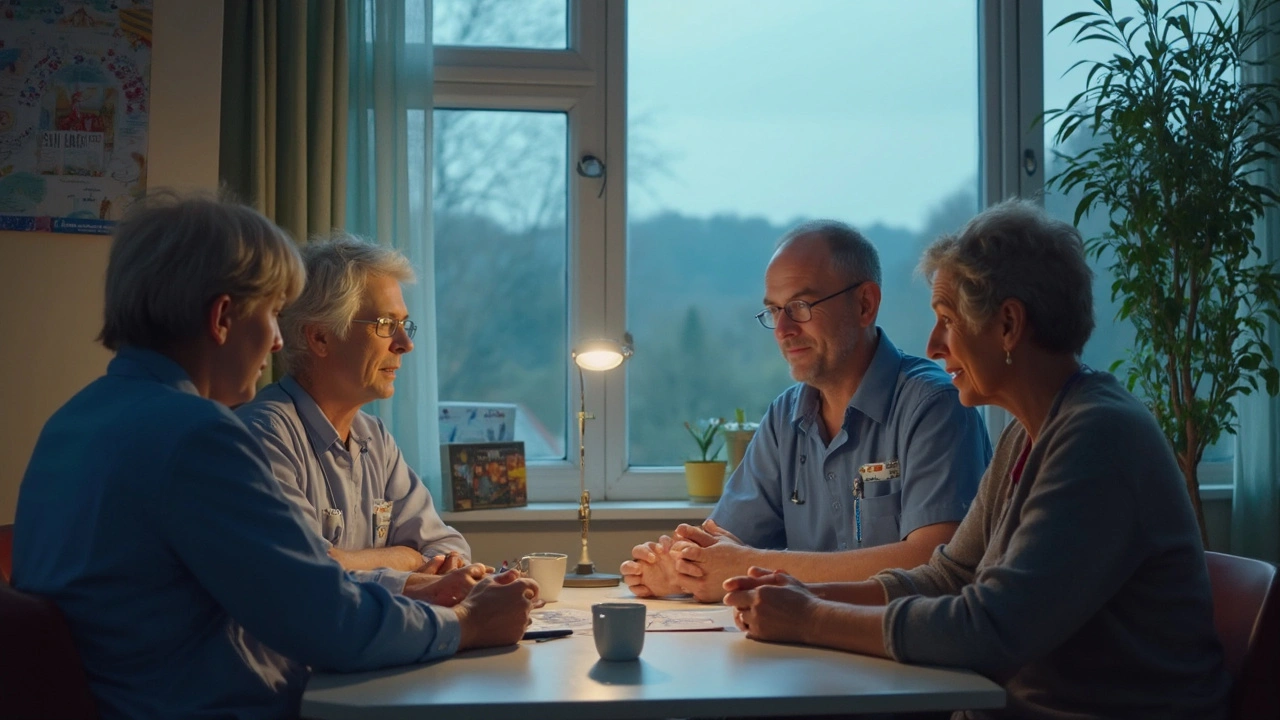
Here’s something wild: Chronic lymphocytic leukemia is one of those cancers that can sneak up on people with barely any warning. Yet, there’s this paper-thin thread tying it closely to anemia, a problem that can leave you dragging yourself out of bed, wondering why you’re so worn out despite a good night’s sleep. Most don’t know this, but chronic lymphocytic leukemia (we’ll just call it CLL from here) isn’t just about cancer cells—it messes up your blood in ways that can turn everyday life upside down. Let’s dive into why these two conditions are so closely linked, and how you can make sense of all the science (and the practical stuff) swirling around them.
How Chronic Lymphocytic Leukemia Disrupts Normal Blood Function
The story starts in the bone marrow, your body’s blood cell factory. CLL takes aim at the lymphocytes—a type of white blood cell your immune system counts on—but it doesn't stop there. Those rogue lymphocytes crowd out the normal kids on the block: the red blood cells, platelets, and healthy white cells you actually need. It’s like inviting too many party crashers and then finding out there’s no space left for your real friends.
Red blood cells carry oxygen, and you need a steady flow of them to keep your energy up. But as CLL advances, it slows down or even stops production, or in some cases destroys red cells directly. Picture the inside of your bones turning into bumper-to-bumper traffic—too many bad cells, not enough room for the good ones. That’s how the bone marrow starts struggling to keep up.
Here’s a handy table that shows what your blood tests might look like as CLL and anemia progress together:
| Blood Component | Normal Range | Possible CLL/Anemia Reading |
|---|---|---|
| Hemoglobin | 120-160 g/L | Below 110 g/L |
| White Blood Cells | 4-11 x10^9/L | Above 15 x10^9/L (mostly lymphocytes) |
| Platelets | 150-400 x10^9/L | Below 100 x10^9/L |
When there’s not enough hemoglobin, your organs get shortchanged on oxygen. No wonder people with CLL often end up with anemia along for the ride. You might hear your doctor talk about "autoimmune hemolytic anemia"—that’s when your body loses the plot and starts attacking its own red blood cells, another trick CLL sometimes uses to make life difficult.
The immune system’s confusion is another part of this mess. CLL gives faulty signals, so your immune defenses get overwhelmed. Not only do you get infections more easily, but your own body may destroy red blood cells because it mistakes them for invaders. This double whammy can turn routine checkups into a game of whack-a-mole—fixing one problem, only for another to pop up.
The Hidden Signs: Symptoms People Miss
Here’s the thing: the overlap between CLL and anemia symptoms is huge, which makes things tricky. Lots of folks walk around with unexplained fatigue for ages before realizing something’s off. You don’t need to be a blood specialist to recognize that the most common clue is feeling tired—like, really tired, where coffee and extra sleep don’t help at all.
But there’s more. People notice they get short of breath after climbing just a few stairs or have trouble focusing at work. Sometimes, the skin looks paler than usual—kind of like fading into the background of old family photos, as my mate Steve once described it. On top of that, headaches, dizziness, and that classic "heavy legs" feeling can creep in.
Here are some less obvious warning signs you shouldn’t brush off:
- New or unusual bruising, sometimes without a clear reason
- Cold hands and feet, even during a Sydney summer
- Heart pounding or fluttering, especially when you stand up quickly
- Weak grip, making it tricky to open jars or lift groceries
- Trouble fighting off simple germs—catching colds that linger instead of fading
- Unexplained weight loss and night sweats
The trouble is, most of us (me included) chalk these up to getting older or stressful work weeks. My mate over at the gym was stunned when his aunt, who “just seemed tired all the time,” ended up with a CLL diagnosis after months of mild anemia symptoms.
Doctors will often spot low red cell counts first, but the hidden nature of these symptoms means that regular blood tests are the real heroes here. If you’ve got a family member who keeps saying they don’t feel right, push them to get checked earlier rather than later.
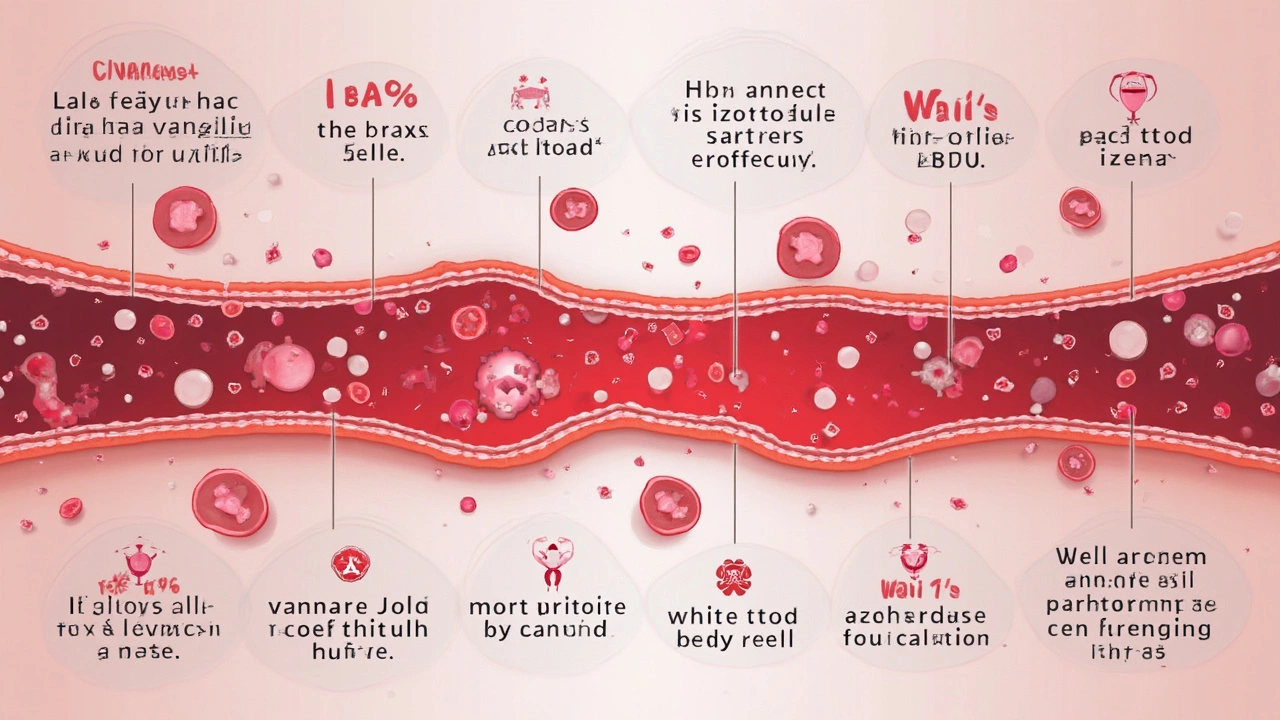
Living with Both: Everyday Tips and Realities
Navigating life with CLL and anemia side by side isn’t for the fainthearted (pun intended). I’ve watched family members juggle fatigue, medication changes, and more doctor appointments than seems fair. But there are practical ways to take back a bit of control.
First up, don’t be shy about managing your energy. Rather than powering through tasks, break jobs into shorter stints with rest breaks in between. My wife, Melissa, swears by the “ten-minute rule”: Do ten minutes, then take a minute to see if you’re flagging or good to go. Simple, but effective.
Daily routines help a lot. Get up and move—even gentle walks with your dog (nothing like a golden retriever named Max to coax you outside, trust me) can improve circulation and keep your spirits up. You’ll want to eat well, shifting focus toward iron-rich foods like spinach, eggs, red meat, beans, and even fortified breakfast cereals. Your body might need more vitamin C as well, since it helps absorb iron. Drop an orange or some strawberries into your lunch for a quick win.
Staying hydrated is a must. CLL and some medications can dehydrate you fast, but sipping water steadily through the day helps your blood stay healthy, even if your red cell count’s low.
- Consider joining a local support group—being heard makes the mental load lighter.
- Don’t shy away from honest chats with your doctor. Ask what your lab results mean in plain language.
- Keep a symptom journal. On days you feel extra tired or a new symptom pops up, note it down. Patterns can help your medical team fine-tune treatment.
- Get your flu shot (and COVID booster, if recommended) every year. Infections hit harder when your immune system’s taking a beating from both CLL and anemia.
- Organize regular check-ins with your GP—even if you’re feeling okay.
One thing friends and family always get wrong: thinking you need to rest all the time. Sure, your body needs more rest, but gentle activity boosts mood and maintains muscle. Think short dog walks, basic yoga, or five minutes of stretching. Even a little keeps things ticking over and helps fight off the “sick role” feelings.
Many people juggle complicated medication schedules. Some treatments for CLL, like certain chemotherapies or immune therapies, can make anemia worse, while others (like steroids or blood transfusions) can improve it. Staying organized—with pillboxes or reminder apps—saves confusion and keeps you on track, especially when brain fog sets in.
When CLL and Anemia Collide: Latest Treatments and What’s Changing
There’s no single “fix” for the CLL and anemia combo, but research keeps marching forward. Now, instead of just blasting away at every cell, some modern drugs target the misbehaving ones directly. For example, drugs like ibrutinib have shown promise for treating CLL, and sometimes help boost red cell counts by thinning out those problem lymphocytes.
If anemia’s your main problem, your doctor might talk about transfusions—fleeting yet powerful boosts for your red cell supply. Another approach is using medications that nudge your bone marrow to make more red cells, like erythropoietin (EPO). This isn’t for everyone, but it’s a tool that can take the edge off the worst fatigue spells.
One thing that surprised me: autoimmune hemolytic anemia (when your immune system attacks your own red cells) can be treated with steroids or drugs that chill out the immune response. If infections are a worry, some patients receive antibiotics and antivirals as a preventive shield, since both CLL and anemia can turn a simple cold into something much more serious.
The world of blood cancers is changing fast. In 2024, about 9 in 10 patients in some clinical trials responded well to the new targeted CLL drugs, which often leads to an improvement in *strong>chronic lymphocytic leukemia-related anemia. That’s miles better than even a decade ago, when treatments relied more on tough chemo regimens and blood transfusions.
Here’s a quick compare-and-contrast of what’s out there right now:
| Treatment | Main Effect | Works For | Drawback |
|---|---|---|---|
| Chemotherapy | Kills fast-growing cells (good & bad) | Both advanced CLL and severe anemia | Lots of side effects, can worsen anemia |
| Targeted Therapy (e.g., Ibrutinib) | Blocks signals in CLL cells | CLL with or without anemia | Can cause bruising/bleeding risk |
| Steroids | Dampens immune attacks | Autoimmune hemolytic anemia | Weight gain, mood swings |
| EPO shots | Kicks bone marrow into gear | Mild to moderate anemia | Not always effective, can raise blood pressure |
| Blood Transfusion | Immediate symptom relief | Severe anemia | Temporary, needs repeat dosing |
The consensus among haematologists in Sydney (and, honestly, in most big cities these days) is that a mix of targeted therapies and old-school tactics gives folks the best quality of life. Every case is different—what works for one bloke might not click for another. So if your treatment changes, or doesn’t work as expected, that’s not a failure. It’s just medicine adapting to your real needs.
Of course, clinical trials are an option worth considering. New drugs mean hope for those who haven’t responded to standard options. Ask your haematologist whether there’s a trial that fits your history, symptoms, and stage of CLL. If you’re not sure, jot your questions ahead of appointments; it’s easy to forget what you wanted to ask when you’re sitting across from a doctor rattling off big words.
The connection between CLL and anemia isn’t just science. It’s a reality that demands attention, action, and a bit of creativity in daily life. By understanding the link, keeping an eye on your numbers, asking sharp questions, and leaning into the best treatments available, you take back a slice of control—even when living with something as tricky as CLL and anemia hanging over your head.
Christine Watson
This article really sheds light on a topic that's often misunderstood. I appreciate how it breaks down the connection between Chronic lymphocytic leukemia and anemia in such clear terms. It's so important for patients to know what symptoms to watch for because early detection can make a huge difference. Managing life with both CLL and anemia might seem daunting, but having expert-backed tips and real-world advice makes it feel a bit more manageable.
And honestly, the emotional reassurance that comes from understanding your condition can’t be overstated. I think it's essential that more resources like this exist for newly diagnosed patients or their caregivers. Sometimes the medical jargon alone can be overwhelming, so this kind of straightforward discussion is just what people need. Thanks for sharing this valuable guide!
Macy Weaver
I'm curious though, does the article touch on the specific mechanisms by which CLL leads to anemia? Like, is it primarily from bone marrow involvement or are there other causes discussed? I've read that sometimes the immune system can play a role in destroying red blood cells, but I'm not sure how that fits with CLL.
If anyone has a deeper understanding or can expand on the exact blood changes happening here, I'd love to hear more. It’s such a complex relationship, and understanding it fully could really help patients feel less anxious and more empowered.
James McCracken
Well, isn't it just fascinating how these conditions are almost designed to perplex patients and doctors alike? Chronic lymphocytic leukemia and anemia — what a classic duo to keep the medical world guessing. Although this article simplifies things, I can’t help but think that such explanations barely scratch the surface.
We must remember, the human body is an exquisitely complex machine, and to reduce CLL’s impact on anemia to mere blood changes is almost too simplistic. There has to be a philosophical angle to this, a broader reflection on the existential battle inside each patient’s veins. But sure, clarity and confidence are nice buzzwords to leave people feeling warm and fuzzy, aren’t they?
Evelyn XCII
Oh great, another post reassuring us that anemia and CLL are "linked" — groundbreaking stuff. Because we all love hearing about how our blood is basically a hot mess and we should watch for symptoms like fatigue or shortness of breath. Real helpful, thanks for the medical 101.
Maybe next time we can get an article on how water is wet or the sky is blue. Kidding aside, I do think it’s useful for people who are losing their minds over these diagnoses to have something straightforward to cling to. But seriously, some of these articles sound like they’re written for a middle school science project.
Nina Vera
Ohhhh, this is exactly what I needed to see today! Sometimes you just want someone to lay things out plainly, you know? I’ve been supporting my uncle who was recently diagnosed with CLL and watching him get tired and pale breaks my heart. This article sounds like a godsend because it not only talks about the science but also gives practical advice.
Managing both conditions simultaneously feels like juggling flaming torches while walking on a tightrope. Honestly, any guide that gives you clarity and confidence when life throws this curveball is GOLD. Fingers crossed it also talks about nutrition and mental health because that's huge in these battles.
Daniel Buchanan
I found it interesting how the article emphasizes symptoms not to ignore. Sometimes the subtle signs can be overlooked, especially when someone is coping with the shock of a CLL diagnosis. Fatigue, pallor, and shortness of breath are easy to dismiss as just "feeling tired" or being out of shape, but they can be red flags for anemia developing alongside leukemia.
It’s a delicate balance to maintain hope while staying vigilant, and resources like this really help bridge that gap. If the article also goes into the different treatment options or how anemia management might change for CLL patients, that would be incredibly useful. It’s about promoting understanding on multiple levels: physical and emotional.
Lena Williams
I can't stress enough how important it is that articles like these encourage patients to advocate for themselves. When you're dealing with two serious diagnoses, it can all feel overwhelming and disempowering. Knowing what symptoms are critical to report can sometimes save lives.
From my experience, anemia often sneaks up on you, and because fatigue is so common, patients and even doctors might attribute it to other causes. Having clear advice backed by experts that demystifies the blood changes in CLL creates a crucial knowledge base. Also, real-world advice — not just textbook facts — is what resonates best because it acknowledges the day-to-day struggles people face.
Sierra Bagstad
The pathophysiology of anemia in chronic lymphocytic leukemia is multifactorial, encompassing bone marrow infiltration, autoimmune hemolysis, and the effects of chemotherapy. This article appears to aggregate these factors into an accessible format for lay readers, which is commendable. However, it is paramount that patients understand the importance of precise medical evaluation to tailor treatment strategies adequately.
For instance, autoimmune destruction necessitates immunosuppressive therapies, whereas marrow failure calls for different interventions. Furthermore, monitoring hemoglobin trends and reticulocyte counts can provide indispensable clues. I appreciate the attempt to enhance patient literacy but hope the nuances are not lost in simplification.
Kemari Nielson
What caught my attention was the article’s promise of 'clarity and confidence' for readers. Confidence is something many lose when diagnosed with something like CLL combined with anemia. Patient education is indeed vital, but it must be balanced with the reality of the disease’s uncertainty.
Encouraging patients to notice symptoms and take action can facilitate timely care, but we must also be mindful not to cause undue alarm. Articles like this should ideally promote a proactive yet calm approach—emphasizing partnerships with healthcare providers over self-diagnosis. It's all about empowering without overwhelming.
Steve Helsel
Honestly, I sometimes wonder if these kinds of articles are just repeating the same info over and over without adding new insights. Chronic lymphocytic leukemia causes anemia, yes, that much is well documented. But how much does the average patient really get out of this? Maybe the problem isn't the info but the way it's delivered.
Are there truly new expert-backed tips or is it the usual 'watch your symptoms and talk to your doctor' spiel? I’d rather see more on personalized treatment approaches instead of generic advice. But oh well, I suppose it’s helpful for those who’ve just started to grapple with these medical terms.
Steve Moody
While I appreciate the attempt to distill complex topics like CLL and anemia into palatable chunks, the article should be evaluated on the merit of accuracy and depth more than accessibility alone. Unfortunately, many layperson resources sacrifice crucial scientific rigor for simplicity, and that does a disservice to informed patients.
For example, the nuanced impact of fludarabine-based therapies on hemolytic anemia or marrow suppression isn't mere trivia but can profoundly influence patient outcomes. If the article engages with such specifics meaningfully, then it merits praise. I encourage all readers to complement their understanding with consultation of primary literature and candid discussions with their hematologist.
Christine Watson
Thanks for all the insightful thoughts here—this conversation really highlights how complex and multifaceted dealing with CLL and anemia can be. I especially liked hearing from those emphasizing patient empowerment and the importance of clear symptoms awareness.
For what it’s worth, I think balance is key—giving clear info without oversimplifying, while also not overwhelming patients with too much too soon. Articles like this one are an important step in providing that foundation.
Also, the practical advice piece can’t be understated. When living with chronic illnesses, managing daily life can sometimes feel like the toughest battle. So, having resources that combine medical facts with real-world tips truly makes a difference.


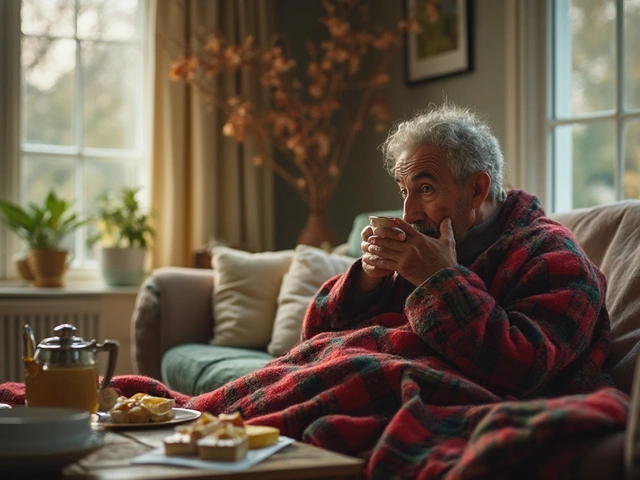
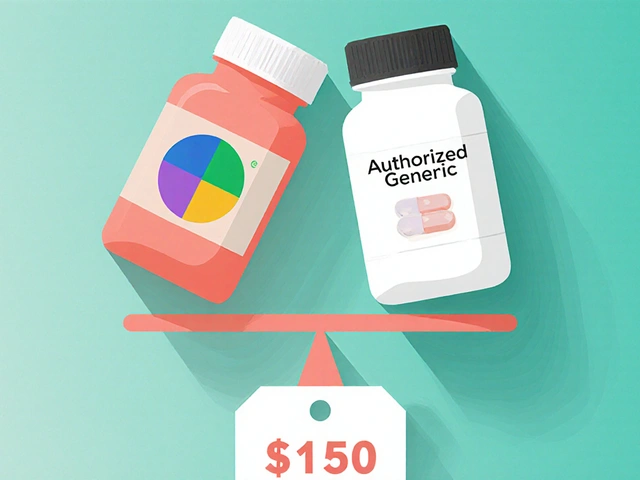
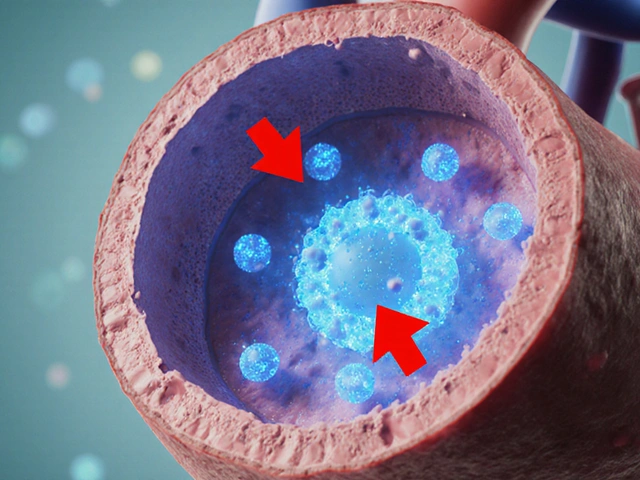

Write a comment